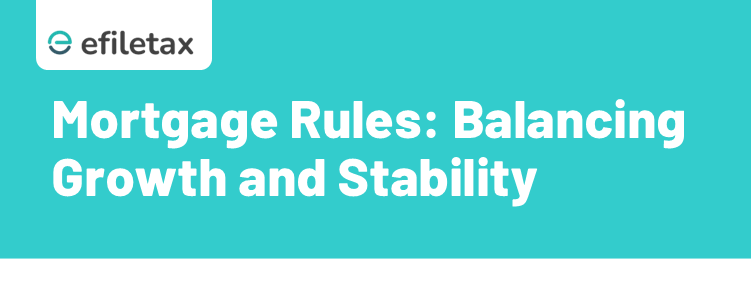The interplay between mortgage rules and economic growth is pivotal in shaping housing market dynamics. Recent updates, such as regulatory adjustments in Canada, the U.S., and the UK, have brought this issue to the forefront. Policymakers face the challenge of balancing accessible homeownership with financial stability, ensuring that the housing market remains resilient while supporting broader economic objectives.

🏡 Mortgage Rules and Housing Affordability
Canada: Expanding Opportunities or Fueling Prices?
Recent changes in Canada include:
- Raised Cap: Insured mortgages now cover homes up to $1.5 million, increased from $1 million.
- Extended Amortization: First-time buyers and new builds benefit from a 30-year amortization.
While these measures aim to boost affordability, critics argue that they may:
- Inflate Prices: Increased demand without addressing supply constraints could push housing prices higher.
- Widen Gaps: Those excluded from the changes may face even greater affordability challenges.
United States: Balancing Interest Rates and Market Needs
The U.S. faces a housing unit shortage of 3.7 million, impacting affordability and economic growth. Key factors include:
- Interest Rates: Recent Federal Reserve cuts aim to stimulate growth, but high mortgage rates (above 7% as of January 2025) challenge affordability.
- Disposable Income: Rising mortgage payments reduce spending capacity, indirectly slowing economic growth.
UK: Easing Mortgage Access
In the UK, regulators propose measures to assist first-time buyers:
- Risk-Taking Flexibility: Adjusting stress tests and incorporating rental history in affordability assessments.
- Planning Reforms: Labour government targets 1.5 million new homes by 2029, addressing supply shortages.
However, deregulation must be approached cautiously to avoid repeating past crises like the U.S. subprime mortgage collapse.
🎯 Economic Growth and Housing Market Dynamics
Positive Impacts
- Stimulated Demand: Easing mortgage rules encourages more buyers, boosting economic activity.
- Increased Construction: Regulatory support for new builds generates employment and contributes to GDP growth.
Potential Risks
- Market Overheating: Unchecked demand could inflate housing bubbles, risking financial instability.
- Consumer Debt: Looser lending may lead to higher debt burdens for households.
📊 Forecasts for 2025
Mortgage Rates
Experts predict a gradual decline, offering relief to buyers locked into higher rates. However, ultra-low pandemic-era rates are unlikely to return, with stabilization expected at moderate levels.
Market Stability
While some foresee risks of declining home sales and prices, a balanced market scenario supported by income growth and employment trends seems more plausible.
🛠️ Public Sentiment and Industry Concerns
Feedback on platforms like X highlights:
- Frustration with rising mortgage rates despite central bank cuts.
- Concerns over supply-demand mismatches driving economic inequality.
- Mixed reactions to easing mortgage rules, with fears of long-term instability.
Conclusion
The debate over mortgage rules and economic growth underscores the importance of balance. Policymakers must:
- Address Supply Issues: Focus on increasing affordable housing stock.
- Implement Prudent Measures: Learn from past crises to avoid market instability.
- Encourage Sustainable Growth: Facilitate homeownership without compromising financial resilience.
By striking this balance, governments can ensure a stable housing market that contributes to broader economic prosperity.